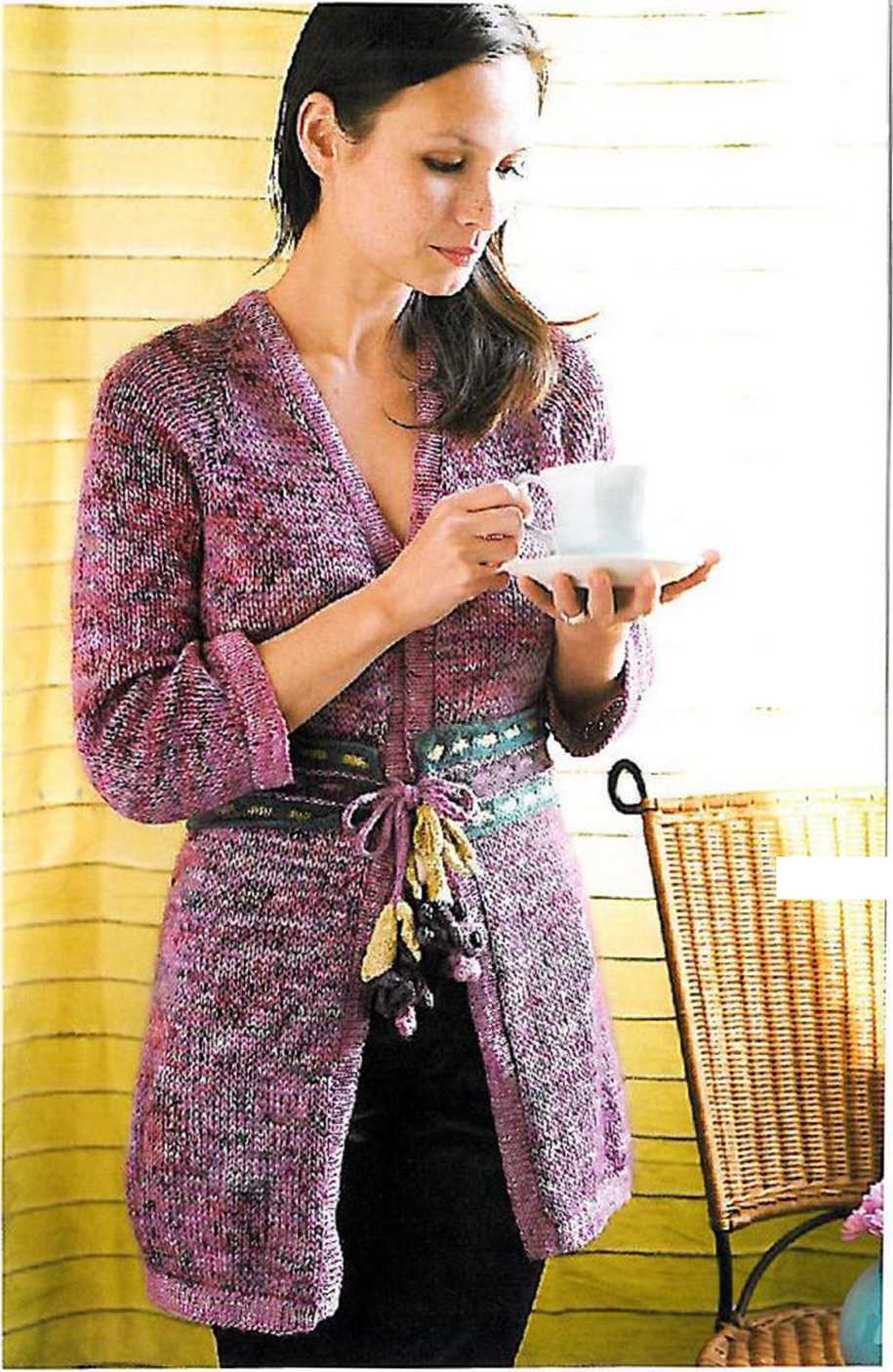41637 S20C 409120813393

s'il vous plait kimono
In muny ways, Shibori is the knitting apiwalcnt ofnot knowhw. Forlunately, there nre many characteńslics we am know aboul Hus c ren Hue art form— formula* tufollow and ways to be guidea to succcss. However, whtn ii comes to shaped andfittcd garments—partiadarly regarding sizing— shibori becomes n slippery slope. Mnking a one-sizc-fils-aii sliawl is one. thing; drop ping a bundle of mamy or dcplefing one.s rherishedsiash on an unpredictable cardigan is a no the t:
hi this design,. I luwe imnimized the risk involvcd by limiting Ihe shibori aspect to one pioolal and Aramatic detail: the obi.
The kiwano itsdfis knil from a combination offdting and nonfdting fibers, but it is not felte.d.
This combinntion ofsilk and mohair fibers is hixurious and textura!iy pleming, worked on a large needle, and gwes the piece n spimdid drapc and haini.
W ha i makcs the piece shibori is the obi. A glorious and uncxpccted palet te offdting fibers aro worked toge.ther in a dynamie slip stiłch patiem, resuiting nt u bophisiicated and beautifid obi, wilk resist method fiowers worked ai the He.

jj-"-
*ylnle shibori
1C3
Wyszukiwarka
Podobne podstrony:
S20C 409120813402 s il vous plait kimono continuai Repecl liiesp ó roundsL (5,6) moro times -48 (51,
S20C 409120813411 s iI vous plait kimono conlinued riown One W th color 3 ard smaliest neeules. pick
S20C 409120813340 Take shibori to the next level—make the Portrait Scarf (page 110), the 5 il Vous P
S20C 409120813400 s il v o u s plait kimono continund Level ExperiercedKnitted Measurements Measurem
S20C 409120813251 Fooi Wor< 13 rows in 2x2 rib patterr. Solc Next 3 rows Row 1 (Right Side) P2log
21002 S20C 409120813440 To hand felt, work in a dean sink. Adjust the water temperaturę to vcry vvar
więcej podobnych podstron